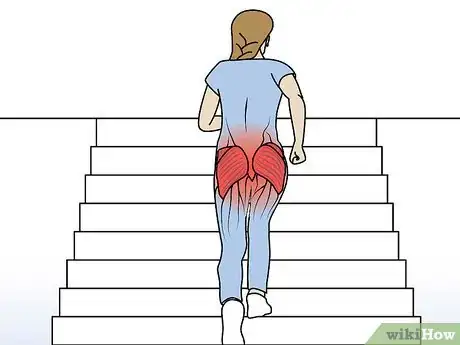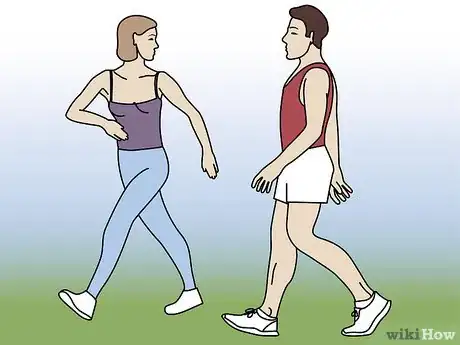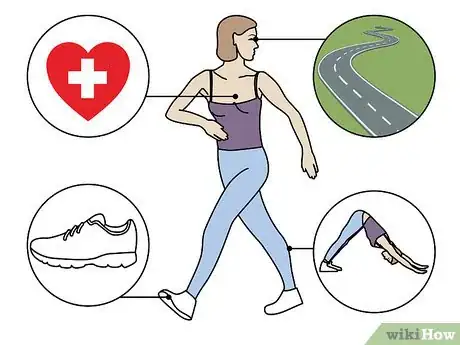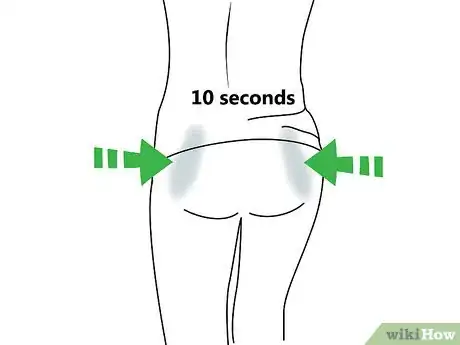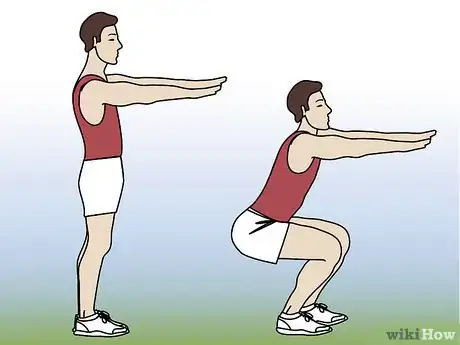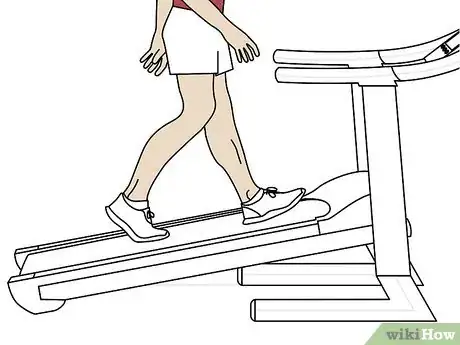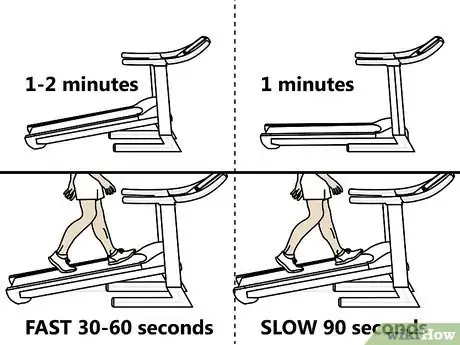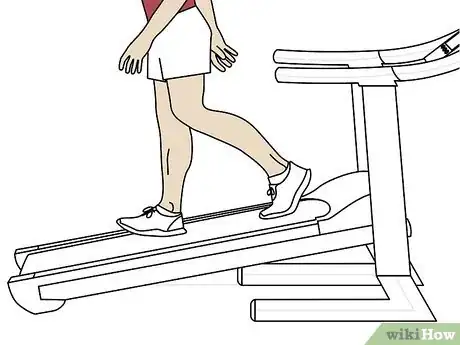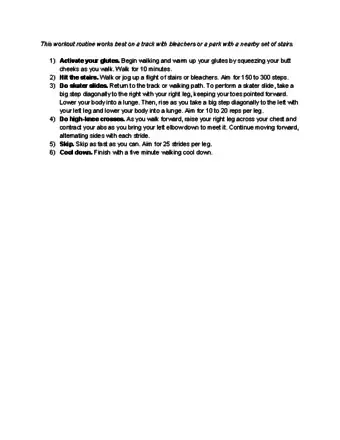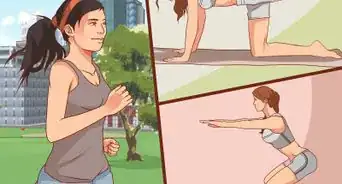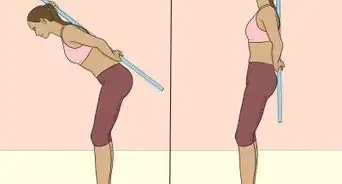This article was co-authored by Nevrize Aydogan. Nevrize Aydogan is a Professional Personal Trainer at Seattle Personal Fitness. With over 15 years of personal training experience, she specializes in nutrition, custom fitness plans, and increasing stamina and muscle tone. She has a Bachelor's degree in Physical Education from Ege University. Dedicated to building custom fitness plans to fit individual client needs, Nevrize is experienced and well versed in sports-based exercise and has also appeared on TV for fitness and exercise programming.
There are 13 references cited in this article, which can be found at the bottom of the page.
wikiHow marks an article as reader-approved once it receives enough positive feedback. In this case, 95% of readers who voted found the article helpful, earning it our reader-approved status.
This article has been viewed 996,374 times.
The health benefits of walking are numerous — it can help you lose weight; reduce your chances of diseases like diabetes, osteoporosis, and coronary heart disease; and can even improve your mental health. But if you want to tone your butt with walking, you're going to have to do a little extra work. By walking on an incline, adding butt-firming moves, and sticking to a routine, you can improve your health and also improve how you look in your favorite jeans.
Steps
Preparing for Your Walk Outdoors
-
1Choose a route that includes an incline, uneven terrain, or stairs. The unfortunate truth is that simply walking on level ground is not going to to fully engage your gluteal muscles. If you're walking on a track, in the mall, or somewhere that is completely flat, you will still reap the many benefits of walking, but you won't be working the muscles in your butt enough to really firm it up.[1]
- Scope out your neighborhood for hilly areas where you might walk. Look at nearby parks and hiking trails, which might be more likely to have a varied landscape.
- If you live somewhere completely flat, consider walking up and down the stairs in your office building or home several times a week.
- If that's too boring, look for bridges with staircases where you can walk up and down, stadiums, or buildings or monuments with tons of stairs out front (think of the "Rocky Steps" that Sylvester Stallone runs up in the Rocky movies).
- Walking up stairs, even at a slow pace, can burn calories two- to three-times faster than walking on a level surface.[2]
- Even if you're not fully engaging your glutes, one of the benefits of walking regularly can be weight loss. Your backside might start to look better simply from walking and losing weight.
-
2Commit to walking at least 30 minutes a day, five times a week.[3] Results won't be instant, and when you're doing moderate exercise (instead of high-intensity exercise, like running), you'll need to exercise for longer periods of time and more frequently.[4]Advertisement
-
3Find a friend to walk with you. Ask a friend or coworker to join you on your walks. You should be able to carry on a conversation when engaging in moderate-intensity exercise, so you can chat with your workout buddy and keep from getting bored while you exercise.[7]
- Having a partner to hold you accountable can make it easier for you to stick to your walking regimen.
- If you're new to the area or can't find anyone else interested in walking, search for a walking club in your area that you can join.
-
4Start slow and stay safe. Staying safe while walking means having shoes that are comfortable and provide adequate support, talking to your doctor about reasonable goals (especially if you haven't exercised in a long time or have health issues), stretching before and after your walk, and staying alert to traffic and other hazards.
- Don't jump into an intense walking schedule if you haven't exercised in a while. Maybe start out on a level terrain and work your way up to an incline or stairs. Increase your stamina and avoid injury from overuse.
- Try not to go for walks alone when it's dark out, either late at night or very early in the morning, when you might not be as aware of your surroundings or visible to traffic.
Incorporating Toning Moves into Your Walk
-
1Squeeze your butt cheeks periodically as you walk. Tightening and releasing your butt will get your glutes more engaged in your workout. Try squeezing your butt for several 10-second intervals during your walk.[8]
- Don't keep your glutes tightened for the entire duration of your walk. Clenching your cheeks for long periods of time can change how you walk and lead to hip and back pain.[9]
-
2Add a walking lunge to your routine. After walking for five minutes, switch to walking lunges, doing 25 reps per leg. Lunges improve your balance, stretch your muscles, and work your legs and butt. Just make sure you keep proper form so you don't injure your knees or lower back.[10]
- Begin with your feet hip-distance apart. You can place your hands on your hips for balance, or do whatever feels comfortable.
- Take one huge step forward, planting your foot firmly in front of you.
- Lower your body, bending your knees to a 90 degree angle (or 45 degree if you're just starting out). Don't extend your front knee past your toes — your knee should always be right above your foot.
- Bring your back leg forward and rise again to a standing position. Then repeat the lunge with the opposite leg.
-
3Incorporate squats into your walk. Squats are considered one of the best, most effective workouts for a shapely rear. You should practice them at home to get comfortable and master the correct form before trying a walking squat. You want to make sure you sink your hips, keep your back straight, and stick your butt out behind you so you don't injure your knees.[11]
- Start with your feet together. Step out to the side with your dominant foot (you will be moving laterally, so if you are walking down a path you may want to turn to the side, leading with your dominant foot).
- Slowly lower your hips, making sure your knees don't extend past your toes.
- Rise back into a standing position, bringing your nondominant foot in next to your dominant foot.
- Do 12 reps. Your squats will carry you sideways, with your dominant foot leading. Make sure you perform the exercise on both sides, alternating leading with your dominant and nondominant foot.
Walking on a Treadmill
-
1Set the treadmill on an incline. Striding uphill, against the force of gravity, will force your legs and butt to work harder.[12] Walking on an incline can also be easier on your knees.[13]
- After warming up, increase the incline on the treadmill every few minutes until you reach a 10% incline.[14]
- Your legs, butt, and lungs should feel challenged, but not exhausted. If you are unable to talk, lower the incline. If you have enough breath to sing, raise the incline higher.
-
2Try interval training to burn more calories without reducing muscle mass. Steady cardio can actually lead to muscle loss, which is not what you want when you're trying to tone and shape your butt. Interval training means you alternate between periods of sprinting and walking, but it can be adapted for just walking, too.
- Try applying intervals to inclines.[15] Set the incline to 8% and hold on to the handles, digging your heels into the treadmill and lifting your knees. It should feel like you're dragging yourself through the mud.[16] After one or two minutes, go back to a 1% incline and rest for a minute.
- To practice intervals without sprints, walk at a slow pace for 90 seconds. Then increase the speed to a quick walk, but not a run or jog, and do that for 30-60 seconds. Then go back to your slower pace for another 90 seconds, and so on.
-
3Walk backwards on the treadmill to engage your glutes. Pay close attention to what you're doing so you don't fall and walk at a slower pace than you're used to.[17] Walking backwards expends more calories and makes your glutes and hamstrings work harder than walking forwards.[18]
- Because walking backwards on a treadmill is risky, make sure you are not overtired when you try it. Start with the treadmill on the slowest setting, then increase speed slowly once you feel comfortable.
- Set your treadmill on an incline for an additional challenge, or alternate between walking forwards and backwards to keep your workout interesting.
Butt-Toning Moves and Walking Workout
Expert Q&A
-
QuestionIs squatting 50 times day and night too much?
 Michele DolanMichele Dolan is a BCRPA certified Personal Trainer in British Columbia. She has been a personal trainer and fitness instructor since 2002.
Michele DolanMichele Dolan is a BCRPA certified Personal Trainer in British Columbia. She has been a personal trainer and fitness instructor since 2002.
Certified Fitness Trainer Squatting 50 times per day and night should be fine. However, if your knees experience any discomfort, I recommend reducing the number of squats.
Squatting 50 times per day and night should be fine. However, if your knees experience any discomfort, I recommend reducing the number of squats. -
QuestionWhat about high blood pressure or tachycardia patients?
 Michele DolanMichele Dolan is a BCRPA certified Personal Trainer in British Columbia. She has been a personal trainer and fitness instructor since 2002.
Michele DolanMichele Dolan is a BCRPA certified Personal Trainer in British Columbia. She has been a personal trainer and fitness instructor since 2002.
Certified Fitness Trainer The exercises here are safe for people with high blood pressure and tachycardia. Remember to keep the pace steady and change your pace gradually. Also remember to keep your breathing steady, not holding the breath ever.
The exercises here are safe for people with high blood pressure and tachycardia. Remember to keep the pace steady and change your pace gradually. Also remember to keep your breathing steady, not holding the breath ever.
Warnings
- Check with your doctor before starting any exercise program.⧼thumbs_response⧽
Things You'll Need
- Walking shoes.
- Proper comfortable clothing to suit the weather.
- Wrist watch or other timepiece, so that you will have consistent walks of proper duration.
- Optional walking stick or poles. These can help one keep balance and allow for protection, if there are any dangerous situations or problems with dogs.
References
- ↑ http://www.fitnessmagazine.com/workout/cardio/walking/walking-workout-a-firmer-butt-in-30-minutes/?page=1
- ↑ http://www.health.harvard.edu/newsletter_article/Walking-Your-steps-to-health
- ↑ http://www.health.harvard.edu/newsletter_article/Walking-Your-steps-to-health
- ↑ http://www.health.harvard.edu/newsletter_article/Walking-Your-steps-to-health
- ↑ http://www.health.harvard.edu/newsletter_article/Walking-Your-steps-to-health
- ↑ Nevrize Aydogan. Professional Personal Trainer. Expert Interview. 26 February 2021
- ↑ https://www.acsm.org/public-information/articles/2012/01/20/benefits-of-group-exercise
- ↑ http://woman.thenest.com/tightening-butt-cheeks-tone-walking-13176.html
- ↑ http://woman.thenest.com/tightening-butt-cheeks-tone-walking-13176.html
- ↑ http://www.webmd.com/fitness-exercise/how-to-get-a-better-butt?page=2
- ↑ http://www.webmd.com/fitness-exercise/how-to-get-a-better-butt?page=2
- ↑ http://www.fitnessmagazine.com/workout/cardio/walking/lose-more-weight-walking/
- ↑ http://www.fitnessmagazine.com/workout/real-plans/celebrity/jessica-simpson-butt-leg-exercises/
- ↑ http://www.shape.com/fitness/workouts/tone-treadmill
- ↑ Nevrize Aydogan. Professional Personal Trainer. Expert Interview. 26 February 2021
- ↑ http://www.fitnessmagazine.com/workout/real-plans/celebrity/demi-moores-butt-workout/
- ↑ http://www.shape.com/fitness/workouts/tone-treadmill
- ↑ http://www.shape.com/blogs/shape-your-life/5-unique-ways-make-most-your-treadmill
- ↑ http://www.mayoclinic.org/healthy-lifestyle/fitness/expert-answers/toning-shoes/faq-20058373
- Videos provided by CSIMSFitness
About This Article
To tone your butt with walking, try to walk for at least 30 minutes a day, 5 days a week. If it's easier, go for three 10-minute walks a day. When you're choosing somewhere to walk, opt for a route that includes an incline, uneven terrain, or some stairs, which will fully engage your butt muscles and give you better results. You can also incorporate occasional lunges and squats into your walk to tone your butt even more. For more tips from our Personal Trainer co-author, like how to tone your butt on a treadmill, scroll down!
